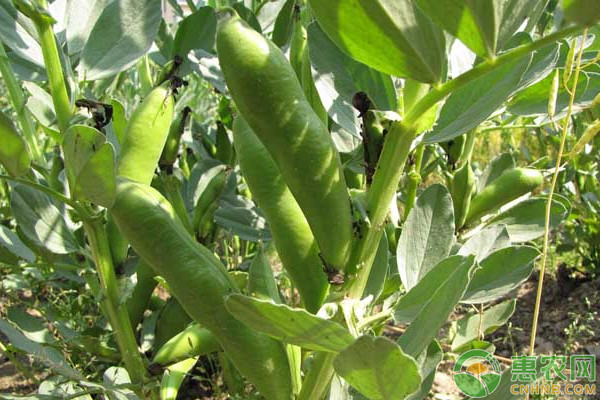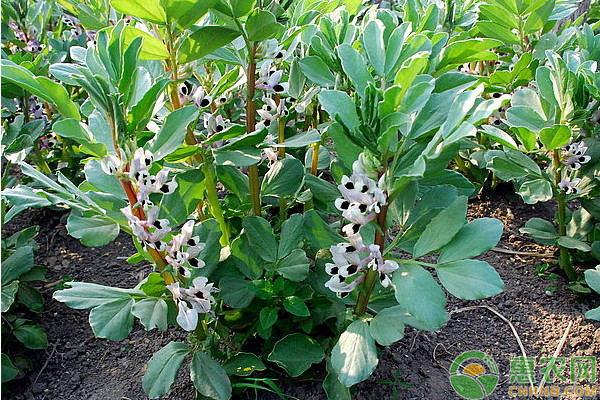Artificial vernalization of fresh edible broad bean to promote early and high-yield cultivation techniques
At present, the traditional cultivation mode of fresh beans is planted in the open field before and after the frost, and harvested in early May of the next year. The time to market is concentrated and the economic benefits are poor. In recent years, the artificial springization of fresh beans has gradually emerged, and it has been listed around 10 days after the Spring Festival. The wholesale price has gradually decreased from 20 yuan/kg to 10 yuan/kg, and the output is above 16.5t/hm2. The benefits are significant. The artificial vernalization, early maturing and high-yield cultivation techniques of fresh broad bean are summarized as follows. 1 Site preparation Broad-leaf bogey continuous cropping, continuous cropping will accumulate a large amount of organic acids secreted by the roots, inhibiting the proliferation of rhizobium. Broad bean roots are developed, the main roots are deep into the soil, and deep and loose soil layers are required. Therefore, it is necessary to choose a plot with deep soil layers, loose soil, convenient irrigation and drainage, and the former crops are non-fava beans. After the harvest of the former crops, the soil should be deeply inspected and matured in time. Before exposure, water and cover the old film to enhance the effect of natural high temperature disinfection. Shallow tillage 1 time before transplanting, fine soil, ditch organic fertilizer 3000kg / hm2, compound fertilizer 375kg / hm2, Fuping, to protect the sputum, to reach the ground. 2 variety selection and spring bud treatment Choose Cixian No. 1 or other broad bean varieties of good quality and suitable for fresh food. Choose broad bean seeds of the same size, full of beans, and no aphids. Soak the broad bean seeds in water at 20 ° C for 5~6 hours, take them out and place them in a bamboo basket, and cover them with a damp cloth for moisturizing. The germination was carried out at 15~25 °C, and when the seeds were mildewed, they were wiped off with 75% alcohol. When the broad bean sprouts white, that is, when the seed is germinated about 3 mm, the sprouted broad bean seeds are placed in a plastic frame. The moist seedling substrate was uniformly mixed with a small amount of carbendazim to cover the broad bean seed buds, and the thickness was 2 cm. Then, it was transferred to a cold storage and treated at a low temperature of 4 ° C for 9 to 12 days, and transplanted into the field after the low temperature treatment was completed. 3 sowing (transplanting) 3.1 sowing date (transplanting period) selection The flowering and time to market of broad bean in different sowing periods are shown in Table 1. On the one hand, low temperature and low temperature in winter is not conducive to the growth and development of broad beans. The sowing date (transplanting period) is chosen to be 10 months or even later, which will cause flowering delay. In winter, the growth of pods is slow, the time to market is more delayed, and the economic benefits are low. On the other hand, broad beans are long-day crops, which are cool and humid, sensitive to temperature, not resistant to heat and cold. When the temperature exceeds 32 °C for a long time during the growth period, the physiological process is blocked or even died. Therefore, from the beginning of September to mid-September, when the temperature drops below 30 °C, it is a suitable seeding and transplanting period for broad beans. Table 1 Flowering time and time to market of broad bean in different sowing dates Table 2 Effects of different cultivation densities on the performance of broad bean plants Note: 4m in the 8m shed, 2 rows per raft. 3.2 Reasonable dense planting It can be seen from Table 2 that the number of branches per plant and the number of pods per plant are the least in the 30cm plant spacing, but because of the high density, the number of pods is the highest. Therefore, the reasonable density is 4 ridges in the 8m greenhouse, 2 rows per ridge, and the plant spacing is 30cm. Planting in wide and narrow rows can improve ventilation and light transmission conditions and reduce flower pod loss. When sowing, the roots of the broad bean radishes face down, and at the same time, the seedlings are planted between the rows to prepare for the lack of seedlings. On the day of transplanting, radix was added with carbendazim and rooting powder, and a dropper was laid at the same time. 4 Field management 4.1 Temperature regulation The seedlings transplanted from the end of August to the beginning of September and from the middle to late September to the beginning of October are required to have a sunshade net on the steel frame shed after transplanting due to the high outdoor temperature during the day. It is usually uncovered at 16:00 and covered after 8:00. When the outdoor temperature drops below 30 °C, the shade net is no longer covered. The time of filming is determined according to the local temperature and the period of the broad bean. Generally, the filming time of the outer film of the greenhouse is at the end of October, and the second filming time is when the outdoor temperature is close to 0 °C and the shed begins to bud. In the middle and late December. When the nighttime temperature is close to 0 °C, the two-layer membrane is used. The effect of the two-layer membrane is mainly nighttime heat preservation, which protects the flowers and small pods from freezing damage. The inner membrane is usually uncovered after 8:00 and is covered before 16:00. Broad bean has stricter temperature requirements. The daily temperature during the day should be controlled between 20 and 26 ° C. When the temperature is high, it should be ventilated and cooled in time. The temperature rises in March, and the minimum temperature in the single-film greenhouse is not lower than 5 °C. In April, depending on the temperature, the top window can be opened, and the film rod can be ventilated throughout the day to promote pollination and pod formation. The mulch is covered in early November to maintain the effect of heat preservation, moisture retention and weeding. 4.2 Fertilizer regulation According to the growth and performance of the plant, the water is generally irrigated. In the autumn, the broad beans transplanted from the end of August to September 15 will be drip once in 7~8d. In winter, drip irrigation will be needed without drip irrigation. From the end of February to the end of March, each Drip irrigation once every 10~14d; once every 7~10d after the end of March. In short, to keep the soil moist, the relative humidity in the overall shed is 60%~80%. According to the growth of the plant, the fertilizer is applied in the form of fertilizer and water in the case of drip irrigation. The flower pod stage was sprayed with 0.1% ammonium molybdate and sodium borate solution to increase the 100-grain weight. At the same time, it is necessary to spray foliar fertilizer at any time to promote the preservation of the pods. 4.3 Plant Management The broad-leaf broad-leafed bean is rich in water, and the summer and autumn light and temperature are suitable for long-term growth, resulting in falling flowers and pods. Should pay attention to observe the length of the inter-segment, timely adoption of high-limit technology, in order to facilitate the preservation of pods, mainly through artificial topping and chemical control. 1 topping the whole branch. After the emergence of 5~6 leaves, the main stem was removed; at the end of March, all the branches were removed from the top; in February-March, the ineffective branches were cut, and the 15 branches per plant were basically guaranteed. 2 chemical control. One is diniconazole. Oxazol has both bactericidal and limited high effects. Spraying oxazolol for about 30 days, the dosage interval is flexibly controlled according to the growth potential, and it is usually sprayed once every 15 days. The second is paclobutrazol. Spray with 10% paclobutrazol 500~1000 times, but spraying paclobutrazol onto pods will cause malformed pods to be deformed. Broad bean is an infinitely growing crop. The greenhouse cultivation mode can fully exert its production potential, but its plant height is much higher than that of open land, which is likely to cause lodging and yield reduction. Therefore, when the plant height reaches 70cm and has been podded, the bamboo stalks and straw ropes are used to fix the stems of the broad bean beans in time to prevent lodging. 4.4 assisted pollination Although broad beans are self-pollinated crops, the greenhouses in the winter are poorly ventilated, and bee boxes can be placed in the shed to increase pod formation rate by bee pollination. 5 pest control In autumn, broad beans are prone to aphids, which induce viral diseases. They can be sprayed with 10% imidacloprid WP 4 000~6 000 times; after transplanting, phoxim is used to kill underground pests. In the seedling stage and branching stage, the sclerotium genus generally damages the young stem, the Fusarium harms the young root, and finally the bacterial wilt is easy to occur, and the root can be circulated with a variety of low-toxic fungicides, such as mancozeb and bacteria. Spirit and so on. 6 timely harvest When the beans are large enough, the umbilical umbilical eyes are picked before turning black. Cut the harvested branches in time to reduce nutrient consumption. After the end of the harvesting season, as soon as possible, the cultivated land will be used as other high-efficiency fruits and vegetables, such as fresh corn, watermelon, and melon. The above is the whole content of the artificial vernalization, early maturing and high-yield cultivation techniques of fresh beans, and hope that this content will be helpful to the farmers who need it!
The natural Organic Purple Sweet Potato in instant noodles is made of fresh seaweed, steamed to dryness at high temperature, and seasoned with salt, pepper, and chili. Natural Organic Purple Sweet Potato is marinated and soaked, then a piece of sun-dried seaweed is roasted. Cut into small pieces and it's Dehydrated Purple Sweet Potato.
Dehydrated Seaweed Tablets,All Natural Seaweed Tablets,All Natural Fresh Sushi Seaweed,Dehydrated Seagrape Seaweed Laian Xinshuyu Food Co., Ltd , https://www.xinshuyufood.com



